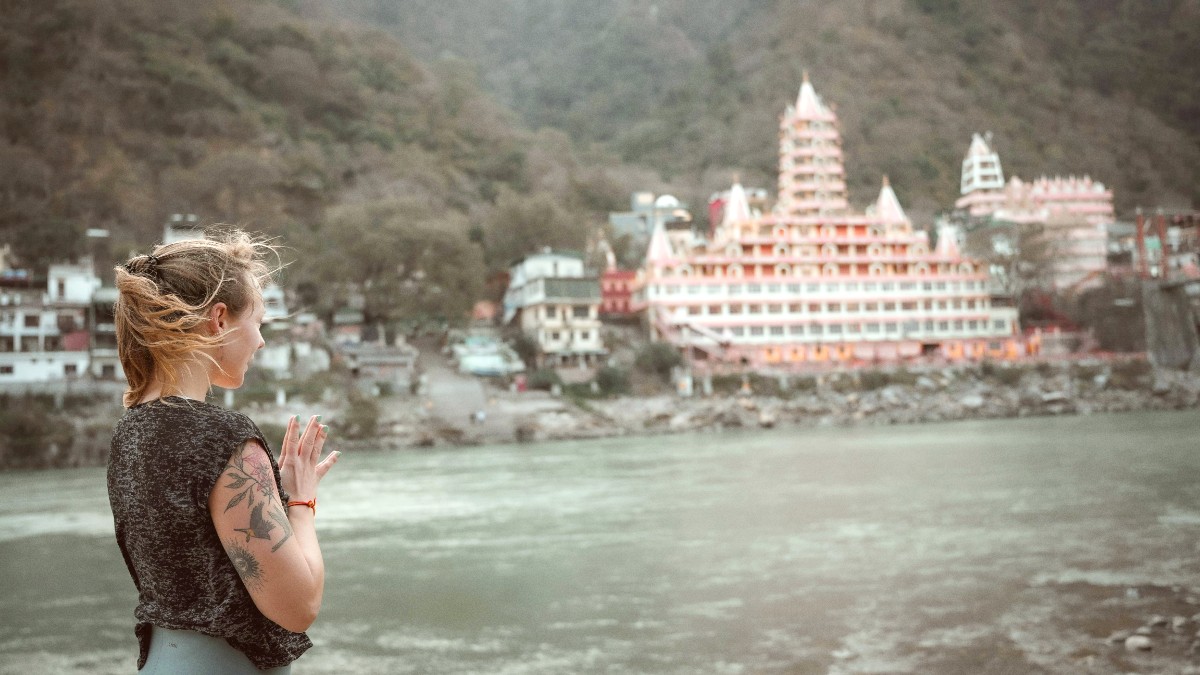
Uttarakhand Uttaranchal, India
While Haridwar is not mainly an adventure hub, its surroundings present opportunities for nature-based activities, especially in nearby Rishikesh and Rajaji National Park.
Limited dedicated hiking or trekking routes within the city limits. Short walks occur along the Upper Ganges Canal banks or to the base of the hills (e.g., to Mansa Devi or Chandi Devi temples, if you choose to walk instead of taking the ropeway). These are generally easy to moderate in difficulty.
Rishikesh, approximately 25 km from Haridwar, offers more established hiking trails like Neer Garh Waterfall Trek (easy, 1-2 hours return) and Kunjapuri Temple Trek (moderate, 3-4 hours return) with panoramic views.
Simple boat rides are available on the Ganges near the ghats in Haridwar, especially during the Ganga Aarti, but these are for scenic viewing rather than sports.
Be aware of strong river currents, especially during monsoon. Only bathe in designated safe zones. Avoid venturing into deep or fast-moving water without caution.
Haridwar profound opportunities for cultural immersion, deeply rooted in its spiritual traditions and daily life.
This mesmerizing daily evening ritual of offering prayers to the Ganges is the main cultural performance in Haridwar. It synchronized movements of priests, flickering lamps, devotional chants, and conch shell blowing. It is a powerful and moving experience.
Witness various Hindu rituals and prayers (pujas) performed by pilgrims and priests at the ghats and temples throughout the day. These are not staged performances but sincere acts of devotion.
While less formally structured than in some rural areas, visitors can support local communities by choosing locally-owned guesthouses, eating at small family-run eateries (dhabas), and purchasing directly from local artisans in the markets. This a direct economic benefit to the community.
Formal language learning courses are not a main tourist offering. However, informal learning occurs by interacting with locals.
These include Diwali (Oct/Nov), Holi (March), Maha Shivratri (Feb/Mar), and Makar Sankranti (Jan). Special foods are prepared and distributed as part of celebrations. Experiencing these festive foods a cultural highlight.
These occur every 12 and 6 years, respectively, drawing millions of pilgrims. Visiting during these times a truly once-in-a-lifetime, overwhelming experience of devotion.
Haridwar, with its spiritual ambiance, naturally presents opportunities for relaxation and wellness, often intertwined with traditional Indian practices.
Many ashrams in Haridwar, like Shanti Kunj Gayatri Parivar, present daily yoga and meditation sessions open to visitors, often on a donation basis or as part of a structured program. This environment peaceful for practice.
Ayurveda, the traditional Indian system of medicine, has a strong presence. You can find Ayurvedic pharmacies and clinics offering consultations and treatments. Patanjali Yogpeeth, a massive institution founded by Baba Ramdev near Haridwar, is a major center for yoga, Ayurveda, and naturopathy, attracting visitors for holistic wellness programs.
Check with your hotel for available spa services. These may include basic massages and traditional treatments.
For dedicated, multi-day yoga and meditation retreats, Rishikesh features a much wider array of options, from beginner-friendly courses to advanced teacher training.
Consider a visit to Patanjali Yogpeeth for holistic wellness programs rooted in yoga, Ayurveda, and naturopathy.
Haridwar, a pilgrimage city, its entertainment and nightlife scene reflects this spiritual focus. Do not anticipate typical Western-style nightlife.
Not available. Alcohol is generally prohibited in the main city area due to its religious status, and no nightclubs or dance venues exist.
Not applicable. Haridwar is a dry city in its core religious areas. Expect no bar districts or pub crawls.
Visitors should temper their expectations regarding nightlife. The city's charm lies in its spiritual and cultural vibrancy, not its party scene.
The main evening event, usually concluding by 7:30-8:00 PM. A deeply spiritual and visually stunning experience.
Quiet strolls along the illuminated ghats are possible after the Aarti, offering a peaceful ambiance.
Dining at local restaurants that remain open until late evening (around 10:00 PM to 11:00 PM) is the main evening activity.
Alcohol is generally prohibited in the main city area of Haridwar due to its religious status. No bars or liquor shops are present in central Haridwar.
Shopping in Haridwar is an experience in itself, giving a view into local crafts, religious traditions, and daily commerce.
Look for shops selling brass idols of deities, wooden crafts, and traditional jewelry. Many shops are run by families who have been in the trade for generations, representing local craftsmanship.
Consider purchasing Ganga Jal (holy water), Rudraksha Malas (prayer beads), small idols of deities, religious books, and Ayurvedic products.
Luxury and boutique shopping options are very limited in Haridwar. The city's shopping scene focuses on traditional, religious, and everyday items rather than high-end designer goods. For luxury shopping, larger Indian cities like Delhi are the appropriate destination.
When shopping in busy markets, carry a Reusable shopping bag to lessen plastic waste and make carrying your purchases easier.